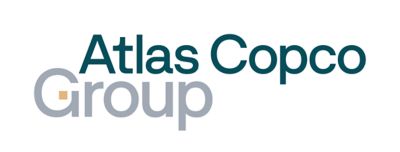Leading the way in energy efficiency
September 8, 2015
Industries:
Automotive OtherTopics:
Sustainability Energy efficiency Value creation Society and environmentGeography:
GlobalEnergy is on everyone’s mind these days amid concerns about its price, the impact of its emissions and the geopolitical tensions involved in producing it. Atlas Copco is doing its part, but how much can one company do? Quite a lot, when that company is the largest producer of air compressors.
Energy efficiency is essential to meeting the climate goals. Atlas Copco’s energy-efficient products are continuously developed and improved to reduce emissions and increase its customers’ competitiveness.
Energy efficiency gives our customers sustainable advantages from a total cost of ownership perspective.” Per Roos
The high-tech SmartROC drill rigs from Atlas Copco’s Mining and Rock Excavation business area are equipped with cutting-edge equipment to minimize the cost of drilling and blasting. SmartROC’s 225-horsepower engine uses only about half as much fuel as comparable rigs by eliminating overall energy loss, system by system. “The basic principle of SmartROC is very simple: the diesel engine only produces as much energy as is needed at any given time,” says Per Roos. “In some cases this cuts fuel consumption by almost half, compared with alternatives on the market or our own older models. Usually the savings are between 25 and 45%.” For example, operators can adjust flushing air volume and dust collector fan speed as needed, rather than running them at full power unnecessarily. Engine and compressor speed self-adjust according to demand. Meanwhile, three variable hydraulic pumps cut engine speed during non-drilling time and tramming. Dual stroke settings offer alternative percussion energy level and impact piston frequency. The rock drills work like two drills in one, further boosting efficiency. Roos says SmartROC is a great example of how Atlas Copco develops products on the front line in energy savings. “We focus on the idea that there’s always a better way,” he says. “Product development is cross-functional. It’s driven by R&D, but without involvement from all other functions it won’t work. You need the complete organization to be continuously improving.” “SmartROC is an example of the successful launch of a product into a very conservative market where it’s difficult to introduce new technology,” says Roos. “It’s a very fragmented market, including everything from small contractors up to large mining companies. The big companies tend to have more of a focus on environmental and sustainability issues. We can clearly see that they appreciate the benefits. Energy efficiency gives our customers sustainable advantages from a total cost of ownership perspective.” Philippe Ernens, President Airtec division, agrees that cost saving is the primary driver for customers. “In the compressor market, the energy cost to run the compressor is typically more than 80% of the lifetime cost of a unit,” he says. “Therefore efficiency is key in the decision to invest in a new compressor, and so is our ability to select the best solution for our customers.” In the Airtec division, the focus is on the compressor core, which accounts for most of a compressor’s energy consumption. “Energy efficiency is the key driver of our development,” says Ernens. “Our goal is to improve core performance by 1% every year. This means that every new generation of compressor cores must be 7% better, as we renew the full range around a period of seven years. Looking back at history, we’ve improved oil-injected screw compressors by more than 25% since the early 1970s. More than half of that was achieved in the last 15 years.” Compressor Technique is the largest business area within Atlas Copco, with the biggest energy impact and the greatest opportunity to shrink consumption. For instance, in North Carolina, one of America’s top motor-sport teams is expanding rapidly while keeping its energy bill in check, thanks to a comprehensive package from Atlas Copco. Stewart-Haas Racing is a two-time title-winning NASCAR Sprint Cup Series team co-owned by three-time Sprint Cup champion Tony Stewart and Gene Haas, founder of Haas Automation. It has built a new 125 000-square-foot state-of-the-art race shop next to the team’s existing headquarters in Kannapolis, North Carolina. Haas F1, which will make its debut in the FIA Formula 1 World Championship in 2016, will also be headquartered and build race cars at these new premises. The local Atlas Copco customer center conducted audits and recommended products for the new shop. The aim: to double air capacity without substantially increasing the energy bill. “Stewart-Haas Racing has used Atlas Copco’s compressed air since their launch, so when it came to expanding, we were happy that we were first in mind for them,” says Paul Humphreys, Corporate Communications Manager for Atlas Copco in the United States. “Stewart-Haas Racing opted for a combination of one variable-speed drive machine and one fixed-speed, which is common when it comes to finding the best combination to cope with fluctuating demand,” Humphreys explains. A race shop is one of the toughest environments when it comes to forecasting how much air will be needed. The GA VSD+, an oil-cooled variable-speed rotary screw compressor, is a great choice for Stewart-Haas Racing. A race shop is one of the toughest environments when it comes to forecasting how much air will be needed. Long periods of relatively low usage are followed by short blasts of heavy usage – with no time to waste waiting for the air supply to catch up.
When it came to expanding, we were happy that we were first in mind for them.” Paul Humphreys
“The oil-cooled variable-speed rotary screw compressor is a great choice for them,” says Humphreys. “With such low-load periods, typical variable-speed drive applications could be susceptible to water issues, as the oil might not get hot enough. The new VSD+ compressor has an internal mechanism to maintain the oil temperature and avoid the possibility of water getting in the system. The low noise level means that they can install the compressor in the center of their working environment.” Stewart-Haas also purchased a high-pressure piston machine for use when practicing pit stops and simulating the air pressure typically found at the track. According to Humphreys, the nearby full-service team was a big reason for Stewart-Haas choosing Atlas Copco, with design, installation and service all handled through a single source, with a guaranteed quick response. Stewart-Haas has Total Responsibility Service Contracts on all of its products, and the monitoring system SmartLink is installed throughout, providing 24/7 remote monitoring of the team’s compressed air system to ensure continuous uptime and peak performance. “They can’t afford to be down for a minute,” he says. “A big race at the weekend won’t wait for them. It’s an environment where pressure on deadlines is a daily activity.”
Atlas Copco has been a consistent, committed partner since the beginning of Stewart-Haas Racing, and we’re proud to have them in our shop.” Brett Frood
Meanwhile, the original shop still has three Atlas Copco compressors. They need a lot of air, key applications include: paint spraying, breathing air and general shop air for their workshop and bodyshop. “Both facilities will be data-logged so we can analyze the effectiveness of the products in the new shop and plan to upgrade the compressors in the older shop,” Humphreys says. “Atlas Copco has been a consistent, committed partner since the beginning of Stewart-Haas Racing, and we’re proud to have them in our shop,” says Brett Frood, Executive Vice President, Stewart-Haas Racing. “Sustainability is a key theme to our shop expansion, and Atlas Copco equipment will ensure that despite doubling our capacity, we won’t have to double our energy bill. In fact, with the new energy-saving equipment, we’ll see only a minimal increase, which will help keep our resources focused on putting race cars in victory lane.” Turning to the Industrial Technique business area, Tobias Hahn, President, Industrial Assembly Solutions division, is confident that such progress ensures that the Group will meet its 2020 target. “That goal is going to be achieved by a focus on energy efficiency and a shift to CO2-neutral energy sources,” he says. “This applies to the usage of our products – that is, the energy consumption of our products when used by our customers.” He points out the crucial responsibility of corporate leaders such as Atlas Copco. “Global companies must take the lead on energy savings since they often have a more global reach than individual countries,” he says. “We can make a difference. For instance, our division sells to all the major global automotive manufacturers. Most of them have explicit targets to increase their energy efficiency, both as producers and in their products. So efficiency is very important to us and our customers.” Hahn’s Industrial Assembly Solutions division maximizes efficiency for customers in many ways. For example, new smart joining technologies lead to lighter products that use less fuel. “Our products are very useful in the automotive industry’s ambition to reduce the weight of their products to make them more energy-efficient,” he says. “Our adhesive and self-pierce rivet businesses are used particularly in lightweight vehicles.” At the same time the R&D department is focusing on lower energy consumption in controllers and tools. “This is also a prerequisite for high performance and durability, which complement the energy efficiency goal,” Hahn adds. “We’re constantly transforming our market to more energy-efficient solutions, mainly by transfer from pneumatic tools to electric tools,” he says. “Toyota, for instance, aims globally for only electrical tools in its assembly plants. This will lower energy consumption. Finally, by applying lean thinking, we’re also minimizing and optimizing the design of solutions, which as a consequence use less material and energy.”
One-tenth of industrial electricity consumption
Compressors account for one-tenth of industrial electricity consumption world- wide. So Atlas Copco has a powerful role in reducing energy use and the associated pollution. Customers worldwide who use Atlas Copco’s advanced, energy-efficient compressors are significantly shrinking their carbon footprint. Many have slashed their CO2 emissions by more than half using innovative Atlas Copco technologies such as 100% energy recovery compressors.
20%
The amount by which Atlas Copco aims to cut energy use and CO2 emissions by 2020.
80%
The energy cost to run a compressor is typically more than 80% of the lifetime cost of a unit.
Low-energy SmartROC
Launched in 2011, the SmartROC surface drill rigs have become a flagship for energy savings. Tests shows that they consume as little as 10 to 15 liters of diesel per hour versus 20 to 30 liters per hour for comparable rigs. Tests also showed 25 to 30 kg less CO2 emissions per engine hour, and they meet the USA’s latest Tier 4 emission standards for non-road diesel engines, cutting mono-nitrogen oxide (NOx) emissions by 50% and particulate matter (PM) by 90%.
Written by Wif Stenger
Atlas Per Roos
Philippe Ernens
Paul Humphreys
A race shop is one of the toughest environments when it comes to forecasting how much air will be needed. The GA VSD+, an oil-cooled variable-speed rotary screw compressor, is a great choice for Stewart-Haas Racing.
Tobias Hahn
Atlas Copco’s SCA manufactures adhesive and sealant equipment. For vehicle manufacturers the use of light-weight materials as an energy saving solution is becoming ever more important.
Low-energy SmartROC surface drill rig





